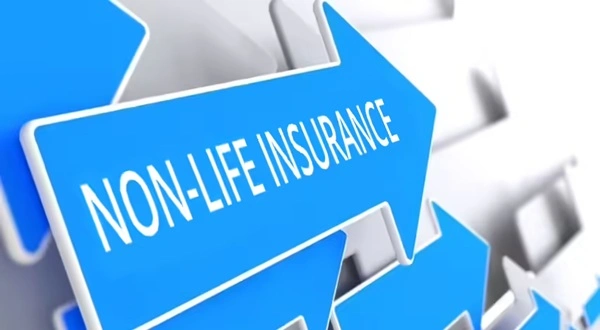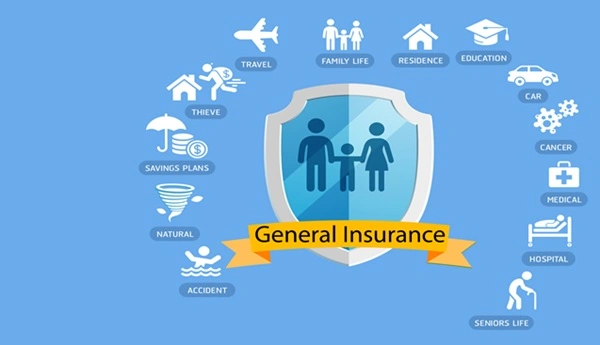Several years ago, I met with a small business owner in Delhi who said, “I have insurance for my life—what more do I need?” That’s when it struck me: many people associate insurance only with life cover, yet the world of non-life insurance in India is vast, vital and often overlooked. Whether you own a vehicle, run a shop, employ people, or simply want to protect your home, knowing what kinds of non-life insurance are available can help you sleep easier at night. In this article, we’ll explore the major types of non-life insurance policies in India, what they cover, and how you might decide which ones matter to you (or your business).
What is Non-Life Insurance?
Non-life insurance—also often called “general insurance” or “non-life/health insurance”—refers to insurance policies that cover risks other than the insured person’s life. These include property damage, vehicle damage, liability risks, health and accident cover, marine, engineering risks, and much more. The Insurance Regulatory and Development Authority of India (IRDAI) specifically regulates non-life insurers and a wide range of general insurance products in India.
In simple terms: if it’s not “life insurance,” it probably falls under non-life. But that covering umbrella includes many sub-types. Let’s dive into them.
Major Types of Non-Life Insurance in India

Here are the key categories of non-life insurance, each with its own use-case, scope and features.
1. Motor Insurance
This is perhaps the most visible non-life product to many Indians because vehicle insurance is mandatory. Under motor cover you’ll find:
- Third-party liability cover – required by law for vehicles on public roads in India.
- Own-damage cover – damage to your own vehicle caused by accident, theft, fire etc.
- Comprehensive policies that combine both.
When you need it: If you own a car, two-wheeler or commercial vehicle.
Tip: Verify that you are covered not just for third-party, but also own damage if you want full protection.
2. Health Insurance / Personal Accident Insurance
These policies cover medical expenses, hospitalisation, and/or accidental injury or death (non-life risks).
Health insurance is a big part of the non-life segment nowadays—especially given rising healthcare costs in India.
Personal accident cover protects you in case of accidental bodily harm.
When you need it: If you want to protect yourself or your family against unexpected medical bills, or cover yourself for accidents.
Tip: Compare features like cover limit, sub-limits (room-rent etc), waiting-periods, network hospitals.
3. Property Insurance (Including Fire, Burglary, Home)
This covers assets such as buildings, warehouses, stock, machinery, contents against damage or loss from fire, storms, burglary, etc.
For instance, under non-life FAQ the IRDAI states: “The most popular is the Standard Fire & Allied Perils policy which covers perils such as fire, riots, flood, storm…”
When you need it: If you own or lease premises (residential or commercial), hold stock, run business from a physical location.
Tip: Ensure you know the perils covered, any exclusions, how sum-insured is fixed (market value vs reinstatement value).
4. Marine, Aviation & Transit Insurance
These cover goods, vessels, cargo in transit (sea, air, land), aviation risks, etc.
If you’re doing import/export, shipping, logistics—or even moving your household goods—this kind of cover becomes relevant. The non-life section of IRDAI mentions marine cargo as a risk.
When you need it: If your business involves shipping, or you’re physically moving goods across cities or countries.
Tip: Note whether the cover is for basic transit only vs “all-risk” cover; check exclusions for war/piracy etc.
5. Liability & Specialty Insurance
This is a broad category covering risk of legal liability for third-party injuries or damages, product liability, professional indemnity, directors & officers (D&O) liability, cyber liability, etc.
Why this matters: As business operations become more complex (digital, global, regulated), liabilities increase and standard cover may not suffice.
When you need it: If your business interacts with public/clients, provides goods/services, has employees, uses digital systems.
Tip: Read the policy carefully: what kind of liability, what limits, what is excluded? Liability cover often has subtle terms.
6. Engineering, Crop, Miscellaneous Non-Life
Other non-life insurance categories include engineering covers (plant/machinery breakdown), crop insurance (agriculture risks), travel insurance, gadget insurance, etc.
These are often more niche but growing in relevance in India. For example, agriculture insurance is significant for rural India and is regulated under non-life.
When you need them: If you own heavy machinery, are in the business of agriculture, travel frequently, or have expensive portable assets.
Tip: For niche covers, always check that the insurer is experienced and the terms are not generic.
My Personal Take & Why It Matters
When I was helping my cousin set up his small manufacturing business in Gujarat, he had motor insurance for his delivery vehicles and health insurance for himself—but he neglected property insurance. One stray spark caused by a machine breakdown destroyed part of the factory premises, and he realised too late that his standard cover didn’t include that peril. The lesson: Understanding which type of non-life cover your asset or risk needs makes all the difference.
In many cases, people buy “one non-life policy” and assume it covers everything. It usually doesn’t. Slipping the right cover for the right risk is what creates real protection.
How to Choose the Right Non-Life Insurance for You
Here’s a simple checklist I suggest:
- Identify your risk exposures:
- Do you own a vehicle? (motor)
- Do you own/operate premises? (property)
- Do you move goods / do export/import? (marine/transit)
- Do you have business liability exposure? (liability cover)
- Do you own specialised equipment/machinery? (engineering)
- Check the policy scope & coverage:
- What perils are covered?
- What is sum-insured or limit?
- What are exclusions and deductibles?
- Is cover “all risks” or just specified perils?
- Compare premiums vs benefits:
- Premium should reflect risk, value of assets, usage.
- Lower premium may mean higher deductible/higher exclusions.
- Check claim settlement track record:
- For non-life insurers check incurred claim ratio, financial strength. For example, IRDAI reports the non-life insurance industry had an incurred claims ratio of ~82.52% in FY 23-24.
- An insurer that settles claims efficiently gives you confidence.
- Review regularly:
- Non-life risk profiles change: vehicle usage changes, property asset values change, business operations evolve.
- Make sure your cover keeps pace.
Conclusion
Non-life insurance is a powerful and necessary tool in India’s risk environment—from unpredictable weather events, vehicle accidents, cyber risks to business liabilities. By understanding the major types of non-life insurance—motor, health/accident, property, marine/transit, liability, and specialty covers—you place yourself in a stronger position to choose appropriate protection rather than generic cover.
Next time you talk to an insurance agent or compare policies, you’ll ask: “Which kind of non-life cover is this? Does it protect my property? My business liability? My vehicle? My export goods?” That kind of clarity equals smarter buying.


